Museum display shows Brighton Royal Pavilion's military hospital past
- Published

World War One servicemen were treated at the military hospital in Brighton
An exhibition at Brighton Museum is celebrating Brighton Royal Pavilion's history as a military hospital.
World War One amputees were treated there and this month marks the 100th anniversary of the first admission of 6,000 patients.
Servicemen received treatment, rehabilitation and training there.
Pavilion Blues: Disability and Identity has brought together patients' experiences with photographs, poetry and objects from the hospital.
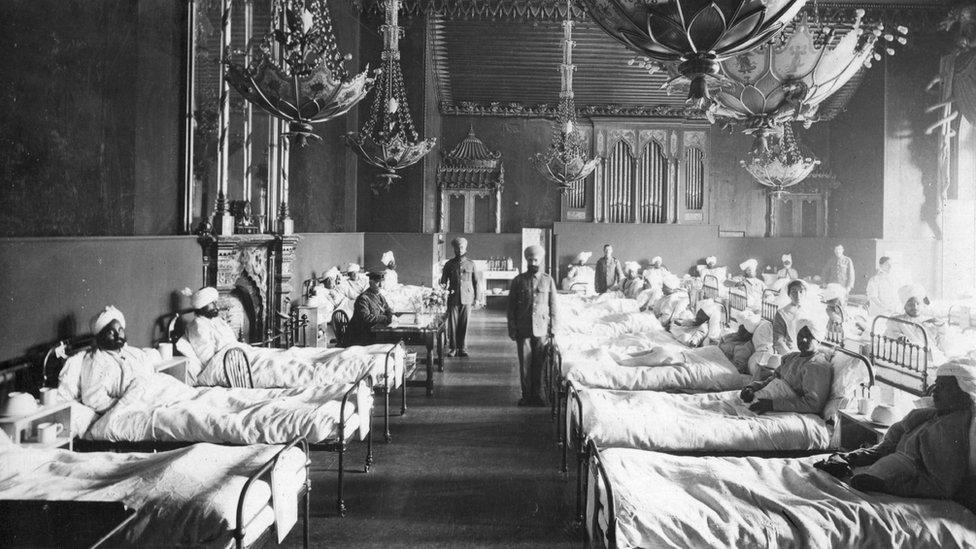
Indian soldiers were brought to the pavilion which was converted into a hospital
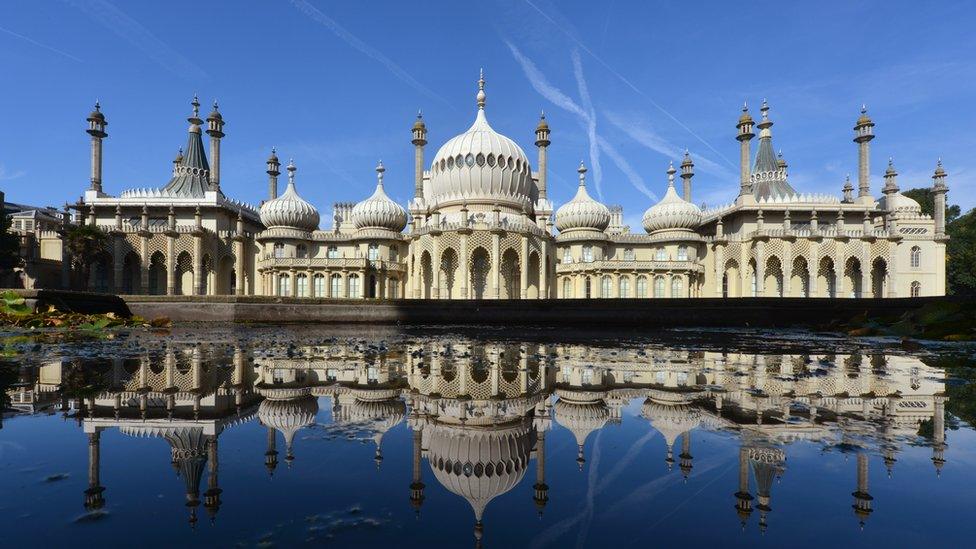
Patients described a long and difficult journey to Brighton
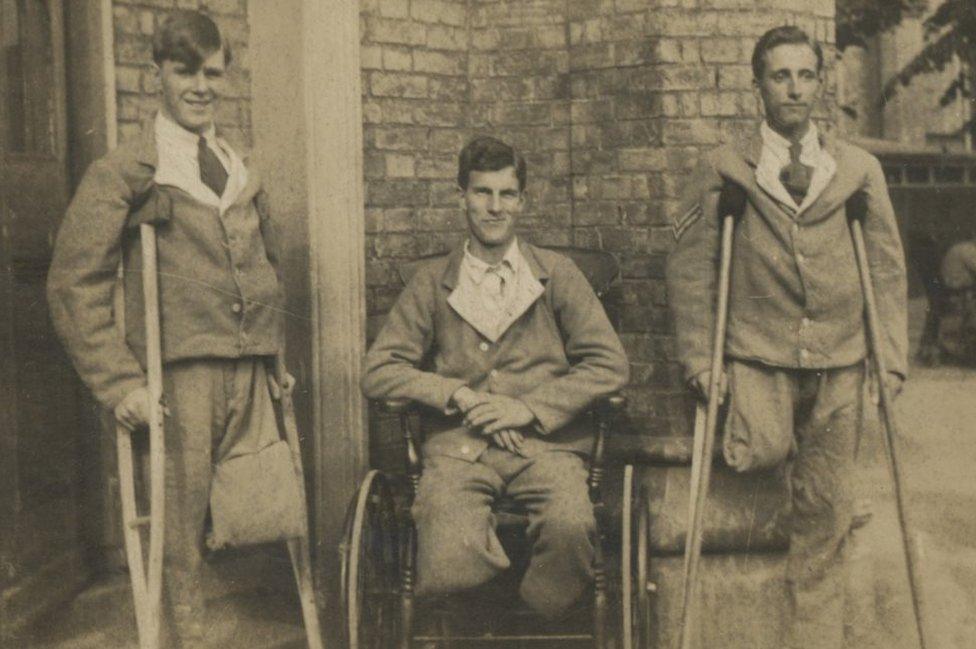
Albert Clay (far right) and two other patients wearing their hospital blues
One of the patients was Albert Clay, external, a corporal in Sherwood Foresters (Nottingham & Derbyshire) Regiment.
He was seriously injured by shrapnel at Ypres and lost his right leg.
'Thousands of stories'
Researcher Jo Palache said letters and telegrams from France told his long and difficult journey to the Pavilion Military Hospital.
She said he was first treated at a dressing station bunker and then he had a blood transfusion at a clearing station but still had his leg amputated.
He went on to be treated at a hospital in Boulogne before he was moved to Brighton. There he had three more operations.
His granddaughter Yvonne Clay visited the exhibition on Saturday.
She said 6,000 amputees stayed on the Pavilion estate and urged relatives of World War One servicemen to get in touch with their stories.
"My granddad was there for six months and we had no idea he was there, that he stayed in a palace," she added.
The exhibition runs until 20 November. The 100th anniversary of the first World War One admission is on 20 April.
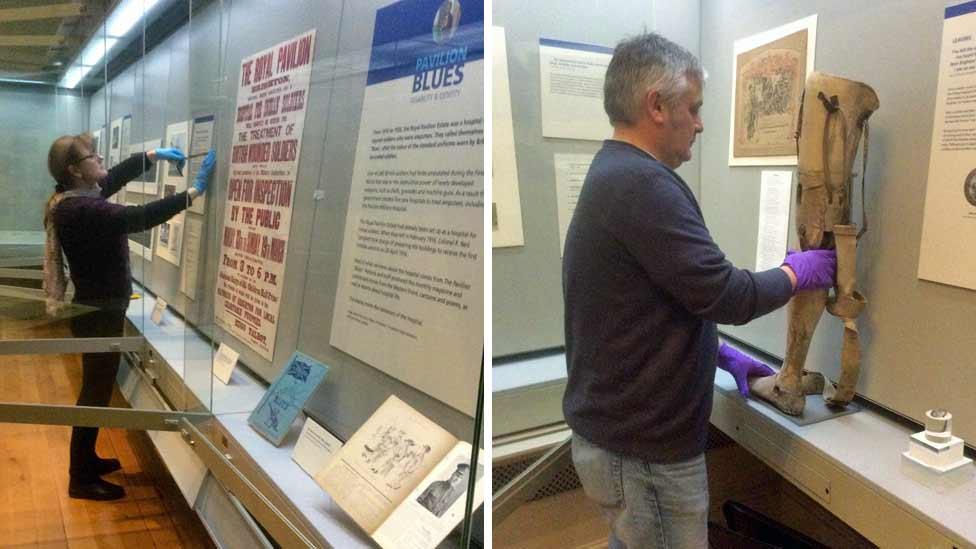
The exhibition runs until 20 November
- Published19 October 2014
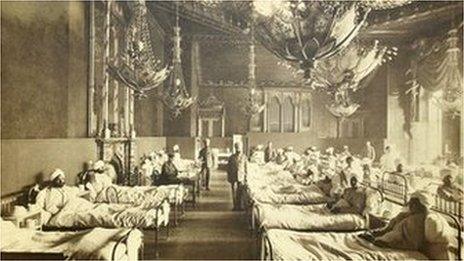
- Published7 June 2014
